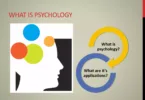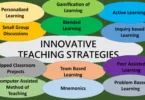It is not difficult to know the concept and the Difference Between Teaching Methods and Strategies but first let’s learn what are teaching Methods and what are teaching techniques
Teaching Methods and Strategies
Teaching methods and strategies are the tools that teachers use to deliver content and help students learn.
There are many different teaching methods and strategies, and the best ones will vary depending on the subject matter, the students, and the teacher’s preferences.
Using various methods and strategies, teachers can create a more engaging and effective learning environment for their students.
What is Teaching Method?
A teaching method is a broad teaching approach used to deliver content to students.
Some common teaching methods include lecture, discussion, project-based, and inquiry-based learning.
What are Teaching Strategies?
A teaching strategy is a specific technique or activity used to sthatthatorting a method.
For example, a teacher might use a lecture method to deliver content. Still, they might also use various teaching strategies to support the lecture, such as using visuals, asking questions, and providing opportunities for student discussion.
Teaching methods are the big picture, while teaching strategies are the details. By using various teaching methods and strategies, teachers can create a more engaging and effective learning environment for their students.
Difference Between Teaching Methods and Teaching Strategies
Teaching methods are the big picture, while teaching strategies are the details. By using various teaching methods and strategies, teachers can create a more engaging and effective learning environment for their students.
Here are some examples of teaching methods and strategies:
Teaching Methods
- Lecture Method
- Discussion Method
- Project-based learning Method
- Inquiry-based learning Method
- Problem-based learning Method
- Experiential learning Method
- Cooperative learning Method
- Independent learning Method
Teaching Strategies
- Using visuals
- Asking questions
- Providing opportunities for student discussion
- Providing feedback
- Differentiating instruction
- Using technology
- Creating a positive learning environment
Teaching methods and strategies are the tools that teachers use to deliver content and help students learn. There are many different teaching methods and strategies, and the best ones will vary depending on the subject matter, the students, and the teacher’s preferences.
Some common teaching methods include:
Lecture: The teacher presents information to the students in a one-way format.
Discussion: The teacher facilitates a conversation between students about a topic.
Project-based learning: Students work on a long-term project that requires them to apply what they have learned.
Inquiry-based learning: Students ask questions and investigate answers to those questions.
Problem-based learning: Students work on solving a problem that requires them to apply what they have learned.
Experiential learning: Students learn by doing.
Cooperative learning: Students work in small groups to achieve a common goal.
Independent learning: Students learn on their own.
Teaching Strategies
A teaching strategy is a specific technique or activity used to support the searching method d. For example, a teacher might use a lecture method to deliver content. Still, they might also use various teaching strategies to help the lecture, such as using visuals, asking questions, and providing opportunities for student discussion.
Some common teaching strategies include:
Using visuals: Using visuals, such as charts, graphs, and pictures, can help students to understand and remember information.
Asking questions: Asking questions can help students to think critically about the material and to engage in the learning process.
Providing opportunities for student discussion: Providing opportunities for student discussion can help students to share their ideas, learn from each other, and to develop their critical thinking skills.
Providing feedback: Providing feedback can help students to identify their strengths and weaknesses and to improve their learning.
Differentiating instruction: Differentiating instruction means tailoring the teaching to the needs of individual students. This can be done by providing different levels of challenge, using other teaching methods and strategiestrategiesevariousuvarioutyping technology: Technology can enhance learning in multiple ways. For example, technology can be used to provide interactive learning experiences, to access information, and to collaborate with others.
Creating a positive learning environment: A positive learning environment is essential for effective teaching and learning. This means building a classroom that is safe, respectful, and supportive.
The Best Teaching Methods and Strategies
The best teaching methods and strategies will vary depending on the subject matter, the students, and the teacher’s preferences. However, by iovariousays and teqtoqueseachers can create a more engaging and effective learning environment for their students.
Here are some tips for choosing the best teaching methods and strategies:
Consider the subject matter. Some teaching methods and techniques are better suited for certain subjects than others. For example, project-based learning is a good method for teaching issues that require students to apply what they have learned.
Consider the students. Some students learn best in one way, while others learn best in another. It is important to consider the learning styles of your students when choosing teaching methods and strategies.
Consider your preferences. As a teacher, you will be the one using the teaching methods and strategies, so it is important to choose techniques and techniques that you are comfortable with and that you t be effective.
Using a Variety of Teaching Methods and Strategies
By using various teaching methods and strategies, teachers can create a more engaging and effective learning environment for their students. This is because different students learn in different ways, and by using various methods and strategies, teachers can reach all of their students.
For example, some students learn best by listening to lectures, while others learn best by doing. By using a combination of classes and hands-on activities, teachers can reach all of their students.
In addition, using a variety of teaching methods and strategies can help to keep students engaged in the learning process. If students are only exposed to one teaching method, they may become bored and lose interest. By using a variety of techniques and strategies, teachers can keep students engaged and motivated to learn.
Similarities
Both teaching methods and teaching strategies are used to help students learn.
Both teaching methods and teaching strategies can be used to achieve a variety of learning objectives.
Both teaching methods and teaching strategies can be used to accommodate different learning styles.
Both teaching methods and teaching strategies can be used to create a positive learning environment.
Differences
Teaching methods are broad approaches, while teaching strategies are specific techniques or activities used. Teaching Methods are reffed as more general, while teaching strategies are more specific.
Teaching methods are typically more teacher-directed, while teaching strategies can be more student-directed.
Teaching methods are typically more structured, while teaching strategies can be more flexible.







